Gardening in shady areas can be a challenge, but it doesn’t mean you have to miss out on having a beautiful garden. With some creativity and the right plants, you can create a stunning oasis that is perfect for those areas of your yard with limited sunlight. From clever pots and containers to shrubs and trees, there are plenty of ideas for creating a shady garden corner that is both attractive and practical. In this article, we will provide answers to frequently asked questions as well as useful tips on Shady Garden Corner Ideas. Read on to learn more!
Add a Shade Garden Path
A shady garden path is a great way to add interest and define the area. It also helps with organization, allowing you to separate various plants and flowers for easy access. You can choose from natural materials like gravel or mulch, or opt for a more formal look with paving stones or brick pavers. Make sure your path material is non-slippery, as this can be a safety hazard. Plant low-growing perennials along the edges for added texture and color. [1]
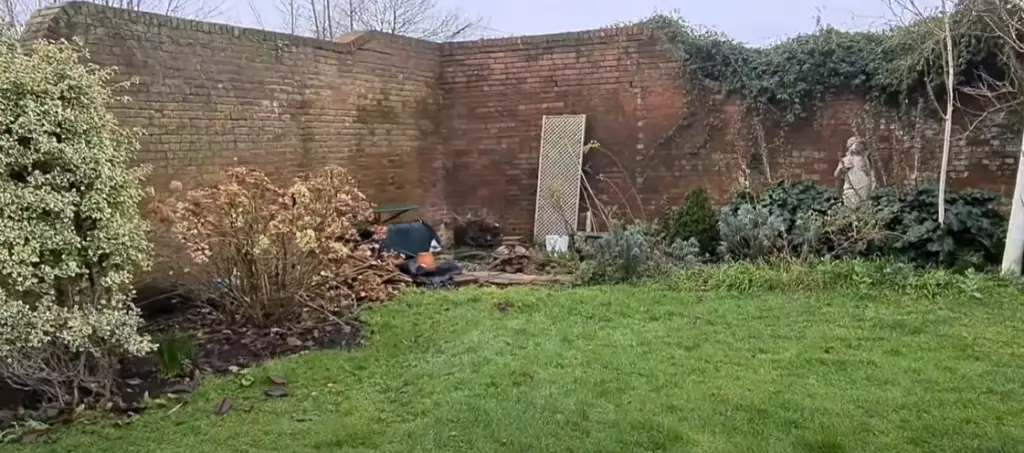
Plant Less Grass, Especially in Shady Spots
Grass is a low-maintenance and often cost-effective groundcover, but it’s not always the best option for shady corners. In these dark spots, grass is more likely to develop sun scorch or disease. The same goes for shade-loving plants that don’t tolerate full sun; they may suffer if put in too much sunlight.
Instead, consider adding more ground cover plants that thrive in shady spots. Hostas, astilbes, and impatiens are all great choices for shady garden corners. Plant them in clumps to create a lush look that’s low maintenance and doesn’t require mowing or fertilizing. If you’re going for a grassy look, you can try planting more drought-tolerant grasses such as colonial bentgrass, rough bluegrass, or creeping red fescue. [1]
Make Your Shade Garden a Retreat
The best way to make your shade garden a truly relaxing retreat is to create a space where you can find peace and solace. Think of the area as an outdoor oasis – like your own private sanctuary. Start by adding comfortable seating, such as benches or Adirondack chairs. Include colorful throws and pillows for added comfort, along with outdoor rugs to create a cozy atmosphere. You can also hang soft, sheer curtains to create an intimate feeling or add decorative lighting for ambiance and warmth. [1]
Use Plants with Different Textures
When creating a shady garden corner, it’s important to create visual interest with plants of different textures and colors. Planting foliage that has large leaves and then combining it with fine-textured grasses will bring depth and dimension to your space. Try planting ferns or hostas among coral bells, Siberian iris, sedges, and other ground covers. These plants visually soften a space while still providing a lush, textured look. [1]
Plant Bright Colors
When planning a shady garden corner, you can often find yourself feeling limited by the lack of light available. This doesn’t have to be the case! Look for plants that thrive in lower light conditions and won’t mind the shade. Bright colors will also give your garden corner an extra pop! Choose colorful foliage such as begonias, impatiens, and coleus. Many of these plants also come in a variety of colors, so you can create an eye-catching display. [1]
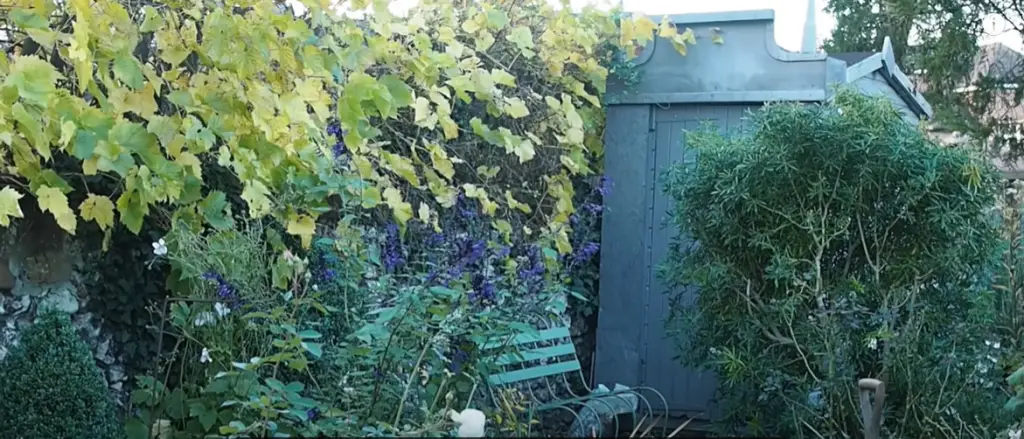
Plant Shade-Loving Groundcovers
For those with a lack of sun, don’t worry – you can still create an attractive garden. Shade-loving plants are just as beautiful and bountiful! Groundcovers are a great way to add color and texture to shady areas in your yard. Some favorites for shade include Ajuga, Vinca minor, Lamium, and Pachysandra. Not only do they provide cover for the soil, but many of these plants also produce beautiful blooms in the spring and summer. They can help to fill in empty patches of dirt and reduce weeds too! If you’re looking for more options, try experimenting with hostas, ferns, or even astilbes. These shade-loving plants will help to create a lush, vibrant atmosphere in your shady garden corner. [1]
Add Art to Your Shade Garden
One of the best ways to add a unique touch to your shade garden is to include some art. Not only will it provide visual interest, but it can also lend an artistic flair that you won’t find anywhere else. Art pieces like sculptures and mosaics are great options for adding dimension and texture to the space. You can even use repurposed objects like old furniture and vintage finds to add a one-of-a-kind look. If you’re looking for something more unique, consider adding items like wind chimes or sun catchers. Not only can they provide visual appeal, but they also add an extra layer of sound and movement that really brings your shade garden to life. Just make sure whatever art you select is suited for outdoor use, so it will be able to withstand the elements. [1]
Pick Interesting Shade Garden Materials
Adding some interesting materials to your shady garden can really bring life and character to an otherwise dull space. You could use stone, bark chips, gravel or wood chips for paths, or you could create terraced walls out of bricks or stones to add a vertical element. Consider planting ground cover plants like Creeping Jenny, Lamium maculatum, Vinca minor and Ajuga reptans. Salvias, hostas and ferns make great additions to shady gardens too! [1]
Plant Flowering Shrubs
Flowering shrubs are an excellent way to add beauty and color to a shady corner of your garden. Not only do they provide a backdrop for other plants, but they can also create a habitat for birds and other wildlife. When choosing flowering shrubs for your shady area, make sure to select varieties that thrive in shade or part shade conditions. Some popular ones include rhododendrons, azaleas, and hydrangeas. Plant them in groups to create a more dramatic effect and be sure to provide enough space between them so they can grow properly. Deadheading spent blooms will help encourage new growth and keep your shrubs looking healthy and full all season long. [1]
Add a Water Feature
A water feature is a great way to bring life and motion into your shady garden corner. It doesn’t have to be anything fancy—a small bird bath or fountain would be ideal for adding a touch of sparkle and sound to your outdoor space. Choose one that fits the style of your garden corner, like a simple stone fountain or a more whimsical design with colorful ceramic frogs. Consider adding some water plants, like water lily or dragonfly fern to your feature to add more interest and attract wildlife. [1]
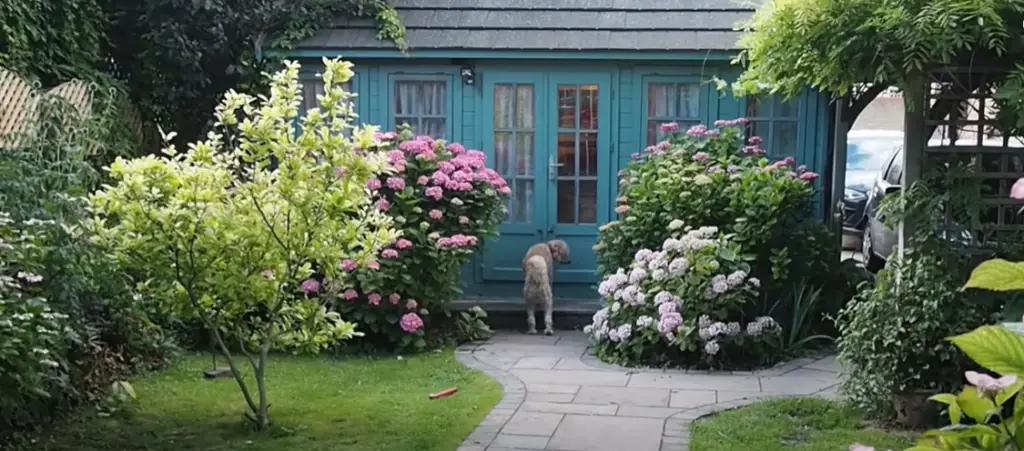
Employ Architectural Elements
If you have a shady garden corner, consider incorporating architectural elements to create an interesting and appealing space. Gazebos, arbors, and trellises can be used to add structure to the landscape. They also provide places to put seating areas or even hang string lights for an extra cozy atmosphere. Additionally, you can use stone columns or walls to create a sense of privacy in the corner and enclose it from the rest of the garden. [1]
Include Shade-Loving Annuals
Annuals are great for adding brightly colored flowers to your shady garden corners. Begonias, impatiens, and coleus make excellent choices when it comes to brightening the corner of your garden with color. [1]
Use Edging Plants
Creating a neat, tidy, and well-defined edge to your garden bed is an important part of creating a visually pleasing landscape design. Edging plants are perfect for doing just that! Whether you have a large or small garden, there’s an edging plant out there that can help add structure and definition to the edges of your garden corners.
If you’re looking for a classic edging plant, English boxwood (Buxus sempervirens) is an evergreen shrub that grows in partial shade and can be trimmed to any desired length or shape. For a more colorful look, consider flowering varieties such as lavender (Lavandula species) or coreopsis (Coreopsis tinctoria). Both of these plants are attractive and easy to maintain, making them great options for shady garden corners. [1]
Create Interesting Plant Combinations
When planting a garden corner, think carefully about the kind of plants you want to include. Try to create an interesting mix of foliage, flower and texture. Think about adding some evergreen shrubs for year round interest or selecting some ferns that can be used as groundcover. You could also add some color with flowering annuals like petunias or impatiens.
By using a combination of plants, you can create an exciting and visually appealing garden corner that will be the envy of your neighbors! Remember to choose plants that are appropriate for the amount of shade in your area. [1]
Plant in Large Numbers
One of the most important aspects of designing a shady garden is to plant in large numbers. You don’t want to just have one or two plants here and there, but rather group them together in larger clumps so that they create an effective visual impact. Look for tall shade-loving trees as well as small evergreen shrubs, perennials, and ground covers that will fill in the spaces around them. Don’t forget to add some colorful annuals for variety! [1]
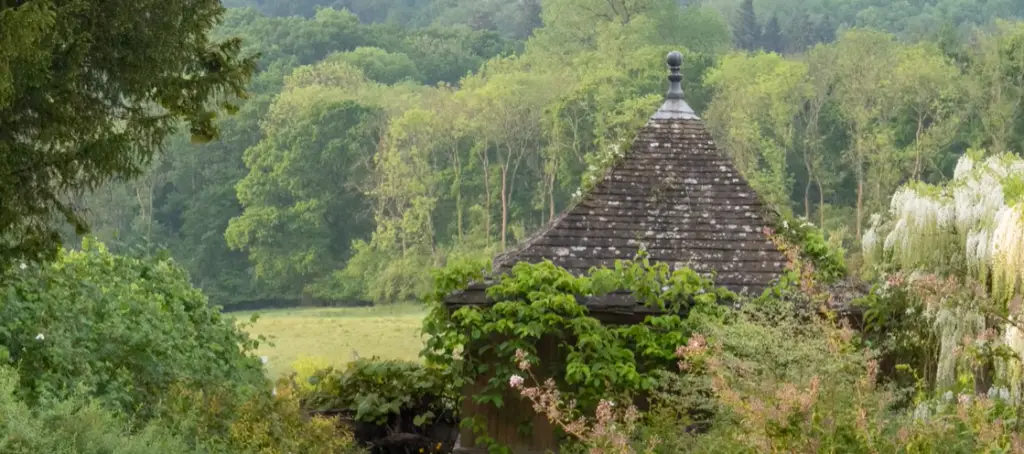
Use Perennial Vines to Add Color
Perennial vines are a great option for adding color, texture, and privacy to your shady garden corner. Vines also look amazing when trained onto frames or trellises. Some popular perennials include clematis, honeysuckle, Boston ivy, grapevines, wisteria, and trumpet vine. Be sure to check the growth rate and habits of the vines you choose, as some can be quite vigorous or take up a lot of space. [1]
Pay Attention to Shade Garden Shapes
When it comes to creating a shade garden, you should pay attention to the shapes and textures of your plants. It’s important to create a harmony between the elements in your yard, and that includes both hardscapes and plantings.
For your shady garden corner ideas, pick plants with interesting foliage or blooms that provide visual interest. You might also consider plants with interesting shapes and textures, like ferns or ornamental grasses. If you’re looking for color in your shade garden, try adding a few flowering plants that flower in the evening to provide soft lighting. [1]
Use Shapes in Shade Garden Hardscape
Shapes and patterns can add interest to a shady garden corner without the need for bright colors. Think of using shapes like squares, circles, or even triangles in your hardscape design. You can also use different materials like wood, stone, concrete, or bricks to create these shapes. This will help break up the monotony while still keeping the natural theme of your garden.
Also don’t be afraid to use curves in the design. These can add a sense of movement and flow while still being subtle enough to fit into the overall look and feel of your shady corner. For example, you could use curved stepping stones or even an arched or trellised fence around the area.
Finally, don’t forget to add texture to your hardscape design. This can be done with different materials like gravel, bricks, or stones as well as planting containers and planter boxes. By adding different textures to the design it gives a more lived in and natural look which is perfect for a shady corner where you want it to feel cozy and inviting. [1]
Plant Shade-Tolerant Trees
If you have a small and shady garden, consider planting shade-tolerant trees. These trees can be used to provide areas of dappled sunlight and large expanses of shade throughout your yard. Planting in a triangular or circular pattern can help make the most of limited space. Trees like silver birch, linden, Japanese maple, and beech are ideal for shady gardens. Be sure to check with your local nurseries to ensure the tree species are suitable for your climate. [1]
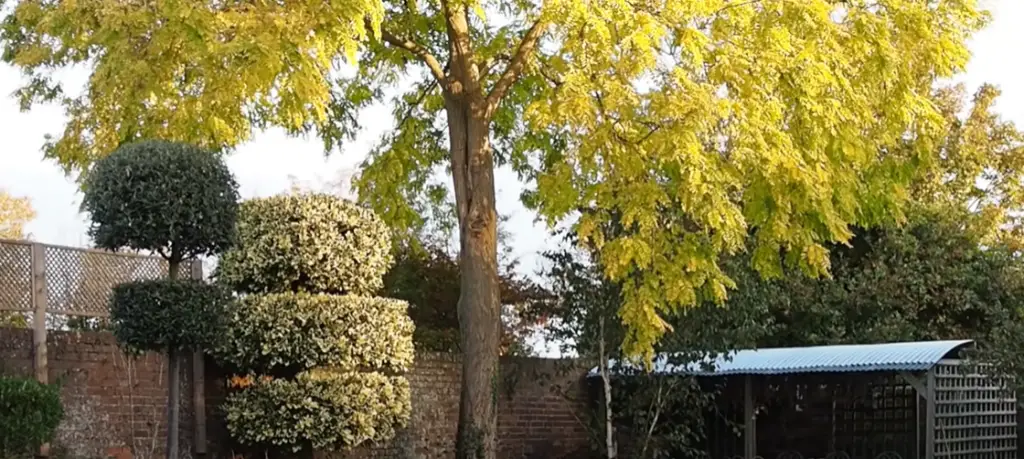
Select a Shade Garden Color Theme
When you are trying to create the perfect shade garden, it is important to consider color. Selecting a cohesive color theme can help draw the eye and make your shady corner inviting and aesthetically pleasing.
Once you have your colors picked out, it is time to start thinking about plants that will work in the shade. Look for varieties that can handle the lower light levels and have blooms in your chosen colors. Hostas, impatiens, and begonias are all good choices for shady gardens.
Finally, don’t forget to accessorize! Consider adding a few colorful garden ornaments – such as ceramic sculptures or birdbaths – to bring your shade garden corner to life. [1]
FAQ
What do you put in a dark corner of a garden?
In a dark corner of the garden, you can plant shade-loving plants such as ferns, heuchera, hellebores, and hostas. These plants thrive in shady conditions and make great additions to any shady corner. Other options include mosses and groundcovers like pachysandra or ivy. For a more permanent option, install a trellis with morning glories or clematis.
What can I put in a dark corner?
A dark corner is an ideal spot for creative ideas. Consider adding a birdbath or water feature for wildlife to enjoy, a bench or seating area for relaxing, and string lights to give the corner ambiance in the evenings. You can also add pots of colorful annuals to brighten up the space. Furthermore, hanging baskets with trailing foliage and flowers can provide a nice visual interest.
How do you brighten up a dark garden?
In order to brighten up a dark garden, you’ll want to add light-reflecting surfaces such as white stones or mulch. You can also introduce plants with brightly coloured foliage and flowers. Consider adding white flowering plants like snowdrops, astilbe, campanula, and anemones for added contrast. Additionally, installing mirrors or other reflective surfaces can help to maximize the amount of light that reaches the dark corner. Finally, adding hanging baskets with bright flowers and foliage is another way to bring life into a shady corner.
How do you make a COZY garden corner?
Creating a cozy garden corner can be done in a variety of ways. Installing string lights or lanterns to give the area a soft glow is one option. Adding comfortable seating such as Adirondack chairs, benches, and cushions is another great way to make the corner more inviting. You can also add accents like wind chimes, bird feeders and baths, trellises with climbing plants, or decorative items like statues or sculptures. Finally, adding fragrant plants to the corner will fill the entire area with a pleasant scent.

What can I do with the corner of my garden without the sun?
If your garden corner doesn’t get enough sunlight, you can still make the most of it. Consider planting shade-loving plants such as ferns, hellebores, hostas, and heuchera. For a more permanent option, install a trellis with morning glories or clematis. Additionally, adding comfortable seating, decorative items, and fragrant plants can create a cozy area. Finally, string lights or lanterns will give the corner a soft glow in the evenings.
How do you make a snuggle corner?
Creating a snuggle corner in your garden is simple and can be done with just a few items. Start by adding comfortable seating such as Adirondack chairs, benches, or cushions. Next, add accents like wind chimes, bird feeders and baths, trellises with climbing plants, or decorative items like statues or sculptures. Finally, add fragrant plants like lavender or rosemary to fill the area with a pleasant scent. With all these elements in place, your snuggle corner will be the perfect spot for an afternoon of relaxation.
What is a COZY corner?
A cozy corner is a comfortable, inviting space in your garden. It can be used for relaxation or entertaining friends and family. To create a cozy corner, start by adding comfortable seating such as Adirondack chairs, benches, cushions, and throws. You can also add accents like wind chimes, bird feeders and baths, trellises with climbing plants, or decorative items like statues or sculptures. Finally, adding plants with fragrant foliage and flowers can fill the corner with a pleasant scent. With all these elements in place, your cozy corner will be the perfect spot for an afternoon of relaxation.
How do you make a Zen corner?
Creating a Zen corner in your garden is an easy and enjoyable way to promote relaxation and mindfulness. Start by selecting a shady area of your garden that you want to transform into the Zen corner. You can then add comfortable seating such as Adirondack chairs, benches, cushions, or throws. For accents, consider adding items like wind chimes, bird feeders and baths, trellises with climbing plants, or decorative items like statues or sculptures. Adding fragrant plants like lavender or rosemary will fill the area with a pleasant scent. Finally, you can add string lights or lanterns to give the corner a soft glow in the evenings.
What is a cozy corner?
A cozy corner is a comfortable, inviting space in your garden. It can be used for relaxation or entertaining friends and family. To create a cozy corner, start by adding comfortable seating such as Adirondack chairs, benches, cushions, and throws. You can also add accents like wind chimes, bird feeders and baths, trellises with climbing plants, or decorative items like statues or sculptures. Finally, adding plants with fragrant foliage and flowers can fill the corner with a pleasant scent. With all these elements in place, your cozy corner will be the perfect spot for an afternoon of relaxation.
Useful Video: Shady Retreat Makeover
Conclusion
Well, that just about wraps up our article on Shady Garden Corner Ideas. We hope this article was helpful to you in creating your dream outdoor space! Remember that when working with a shady corner of your garden, there are many options and possibilities that can add beauty and interest to the area. When tackling such a project, make sure to consider the existing plants and trees in your garden, as well as how much sun or shade is available for certain crops. With careful planning, you can create an inviting oasis even in a shady corner!
Also remember to consult with professionals if needed – they can be great resources if you are unsure of where to start. Finally, don’t be afraid to get creative and experiment with different solutions! At the end of the day, there is no one-size-fits all solution to creating a beautiful shady garden corner, but we hope that this article has given you some ideas on how to get started. Thanks for reading and happy gardening!
References:
- https://www.bhg.com/gardening/landscaping-projects/solving-shade/shade-garden-design-ideas/





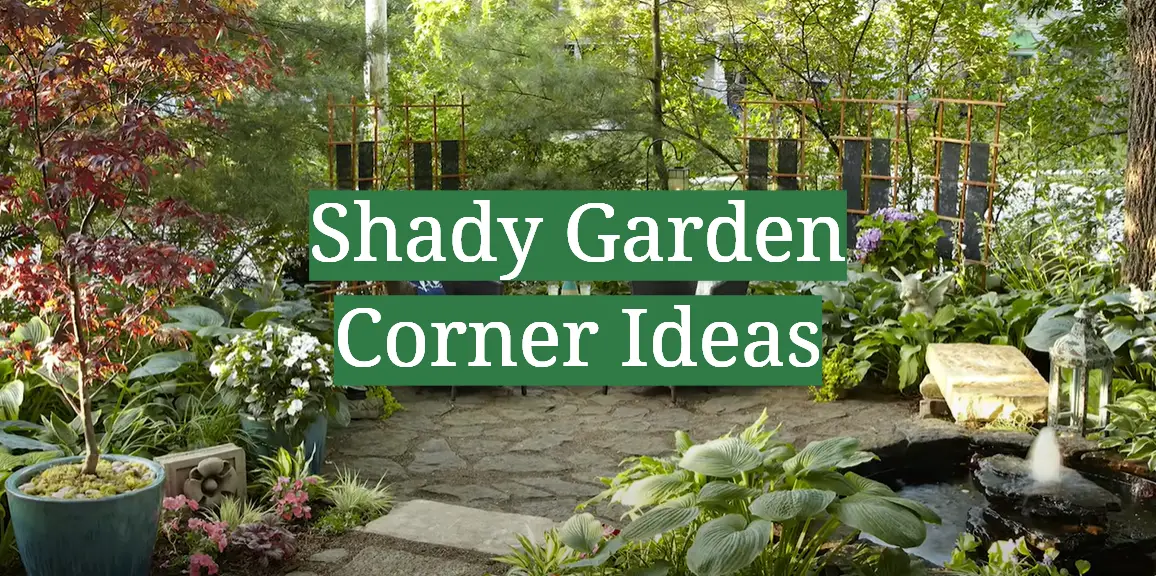
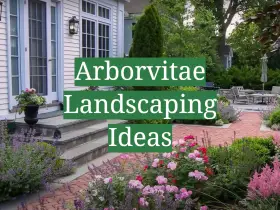



Leave a Reply
View Comments